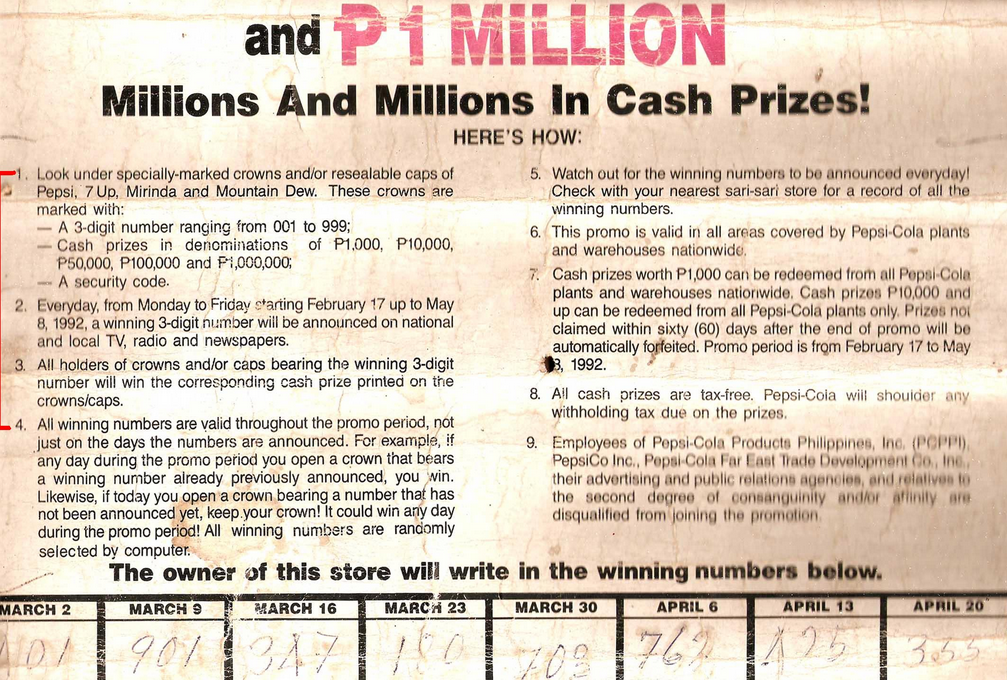Busting a Cap
It was the early 1990s. After years of relative peace following the non-violent overthrow of Ferdinand Marcos, the Philippines turned into a war zone. Trucks were flipped over, and some were burned or stoned. People were taking up arms, launching assaults on office buildings. Some were even crafting homemade explosives such as Molotov cocktails. In one tragic example, a fragmentation grenade bounced off its intended target, killing a 5 year-old girl and a kindergarten teacher while wounding six others.
But the target of the fighting wasn’t the the government or a hostile invader. It was Pepsi.
The reason for the hatred: a marketing campaign gone wrong.
In 1992, Pepsi’s branch in the Philippines was running a new campaign — an under-the-cap contest promising riches. Even at the time, this wasn’t anything unique. The rules were simple then like they often are today — buy a bottle, look under the lid, and you’ll see a number. But to build up the hype, Pepsi decided to announce a winning number on television on the nightly news each week. On May 25th, the winning number was number 349. The grand prize — up to a million pesos tax free, or roughly $35,000 to $40,000 at the time — was a huge amount for a country with a per capita income of roughly $2,000. And the winner was, as one would imagine, extraordinarily excited at the prospect of this major windfall.
Unfortunately, so were the other 800,000 potential winners. Pepsi screwed up, and instead of there being only one cap with the number 349 on it, there were nearly a million due to what the cola giant would later term a computer glitch. And Pepsi was not about to pay out on this billion dollar mistake.
As reported by the Los Angeles Times, the announcement led to the above-described riots, which were on-again, off-again for a few months. Most of the subsequent aftermath was legal — as in, via the legal system. Thousands of lawsuits were filed and even a handful of arrest warrants were issued against Pepsi executives. Pepsi ended up paying out 250 to 500 pesos — about $10 to $20 — to roughly half a million claimants, doing so in hopes of appeasing the dissatisfied masses (that is, not due to a legal order to pay up). And that’s all they’d have to pay. While some courts ruled that holders of 349 caps were entitled to much larger payouts, the Supreme Court of the Philippines decided, ultimately (it took well over a decade!), that Pepsi was not liable for any damages whatsoever.
Bonus fact: The flag of the Philippines (seen here) has three stars, the Sun, and two stripes. One stripe is blue and the other is red. Which stripe is on top is dependent on whether the nation is at war. As stated by law, “the flag, if flown from a flagpole, shall have its blue field on top in time of peace and the red field on top in time of war; if in a hanging position, the blue field shall be to the right (left of the observer) in time of peace, and the red field to the right (left of the observer) in time of war.”
From the Archives: My Way — or Else: The karaoke song which turns some Filipinos into murderers.
Related: Pepsi bottle cap cufflinks. For some reason, they’re caffeine free.

